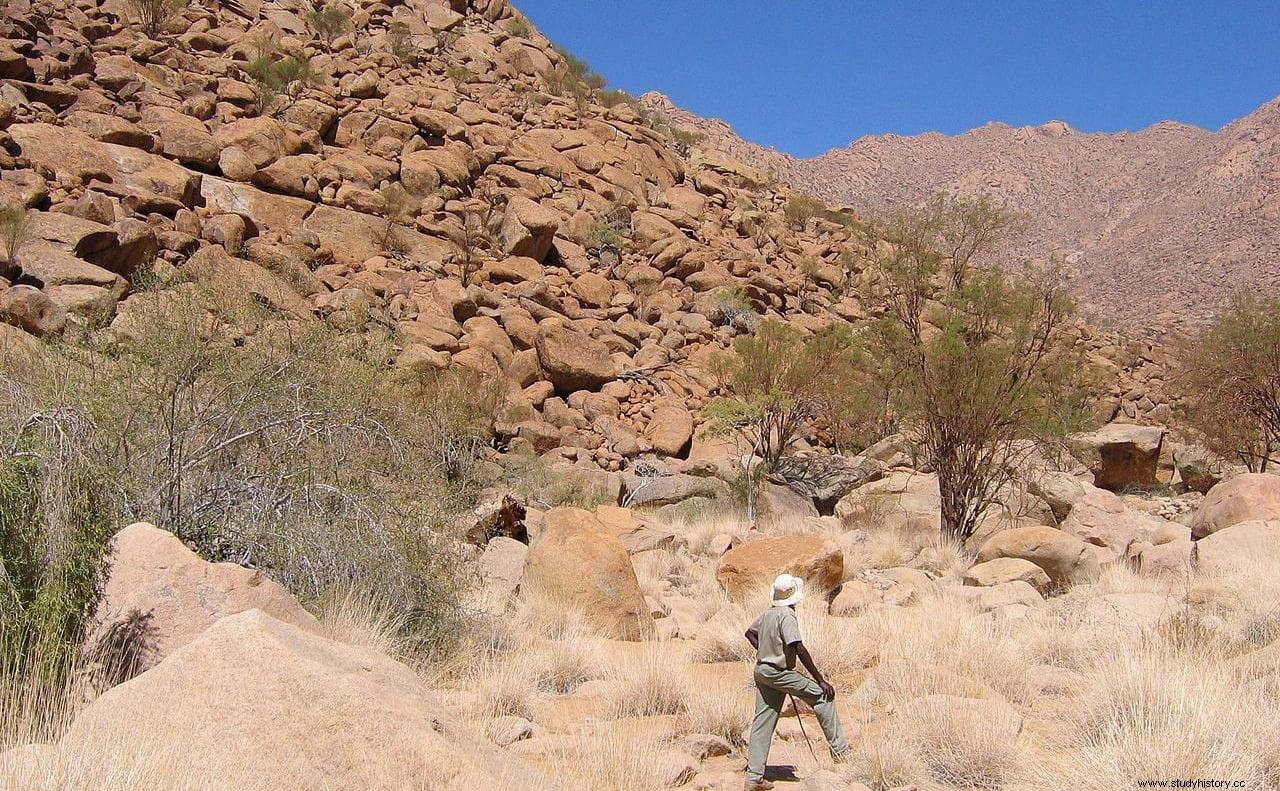Northwest of the Namib desert, in the Damaraland region, is the Brandberg mountain , one of the sacred places of the local Bushman tribes, which they call Daures . In both cases the meaning is the same:mountain of fire . But the surprise that this mountain keeps are the 45 thousand cave paintings it houses, some of which are at least 2,000 years old.
The paintings are distributed throughout the more than a thousand rocky eaves of the mountain, in caves and on exterior rocks. They are especially abundant in the highest parts and, unfortunately, many are very deteriorated.
Not because of meteorological erosion, but because for many decades since their discovery, tourists used to pour water on them to highlight the colors and make them more visible.

Of all the pictographs the most prominent is the so-called White Lady , which is located in a grotto originating in a rocky outcrop, surrounded by other paintings. The panel in which it is found has dimensions of 5 meters and a half by one and a half, and contains other human and animal figures.
The grotto is known as Maack's Haven because it was this German explorer who discovered the paintings in 1918.

The White Lady It is the most detailed figure of the set and also the largest, with a height of 39.5 centimeters. She carries a bow in one hand and what looks like a cup in the other, and her legs are painted white.
The researchers believe that she is not a woman at all, but rather a shaman who would be participating in a kind of ritual hunting. Around her appear completely white or black human figures, animals and even hybrids of human and animal.
As for the materials with which they were made, it has been found that the pigments contain ocher, charcoal, manganese, blood and egg white, among others.

Maack, at the time of his discovery, noted in his notes that the main figure looked like a warrior, and he was surprised to find cave paintings in the Egyptian-Mediterranean style in those latitudes. . It would be Henri Breuil who, after consulting Maack's notes and visiting the place in 1945, gave it the name White Lady .
Breuil later published his theories about the paintings, which he attributed to a Mediterranean group that traveled to southern Africa in ancient times. Based on his ideas, his later hypotheses attributed them to the Phoenicians.
Today it is generally accepted that their authors were the San or Bushmen , a group of hunter-gatherer peoples who still inhabit parts of Namibia, Botswana, Angola, the Republic of South Africa, Zambia and Zimbabwe today. They used to occupy all of southern Africa, until they were displaced 1,500 years ago by the Bantu.

The entire Brandberg mountain is today a protected site and its visit is only allowed with official guides. Bottles are of course not allowed within a certain distance of the pictographs.
